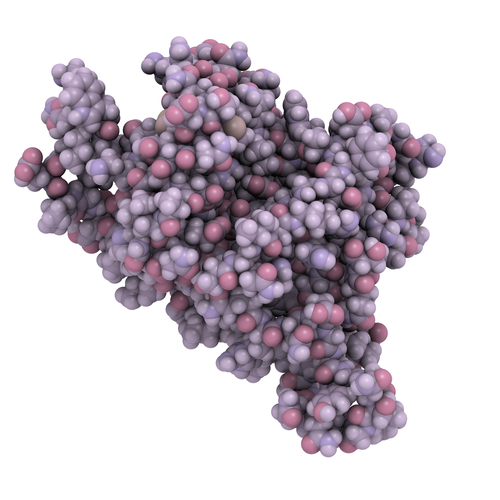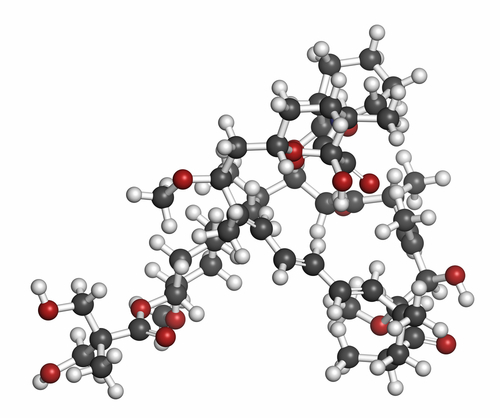Authors:
History:
 It is known for a long time that physical activity benefits health. That was Hippocrates who said that nothing exhausts an organism more than physical inactivity. That fact is confirmed by our everyday experience as well as scientific researches.
It is known for a long time that physical activity benefits health. That was Hippocrates who said that nothing exhausts an organism more than physical inactivity. That fact is confirmed by our everyday experience as well as scientific researches.
However, benefits of mental exercises, cognitive games and memory training were only hypothesized for a long time. However, in 2000s, neuroscientist from the University College of Irvine obtained convincing evidence that training improves brain health. Their investigations have shown that memory training, cognitive games and exercises have positive effect at neurons regeneration in human brain.
Example:
 Scientists from the European Society of Cardiology’s have proved that only 15 minutes of physical exercises a day decrease risk of death in elderly people at 51%. The report covering the results of that research was read at EuroPRevent conference in 2015.
Scientists from the European Society of Cardiology’s have proved that only 15 minutes of physical exercises a day decrease risk of death in elderly people at 51%. The report covering the results of that research was read at EuroPRevent conference in 2015.
In 2013, the Neurology journal published a paper submitted by scientists of the Rush University Medical Center, Chicago. That paper claims that regular mental activity maintains memory in elderly age.
Description:
There is abundant scientific evidence that regular physical and mental activity effect positively at physical and mental health. Physical exercises positively influence specific aspects of metabolism.
 World Health Organization (WHO) states that physical exercises is the best way for diseases prevention for elderly people as well as for young ones. According to WHO, physically active elderly people have lower indices of death from cardiologic, metabolic and some oncological diseases. They have biomarker profile which favour preventing the development of cardiovascular diseases and diabetes type 2, and help improving the health of bones. Physically active elderly people have also higher levels of functional health and cognitive function; they have lower risk of moderate and severe functional and role limitations.
World Health Organization (WHO) states that physical exercises is the best way for diseases prevention for elderly people as well as for young ones. According to WHO, physically active elderly people have lower indices of death from cardiologic, metabolic and some oncological diseases. They have biomarker profile which favour preventing the development of cardiovascular diseases and diabetes type 2, and help improving the health of bones. Physically active elderly people have also higher levels of functional health and cognitive function; they have lower risk of moderate and severe functional and role limitations.
Scientists believe that easy physical exercises for elderly people could be enough to decrise the risk of death substantially. Exercises could include active pacing, riding the bicycle, swimming and gymnastics. Furthermore, it was shown that people maintaining brain activity during the life by means of cognitive activity have lower level of β-amiloid protein that is believed to be one of the main reasons of Alzheimer’s desease.
Additions and Criticism:
 Modern scientists concluded that elderly people need not only physical, but also mental exercises. Unfortunately, this fact is not given appropriate consideration in our country. Developmental exercises and games are necessary not only for preschool child, but also for elderly people. It should be recommended to all our elderly people that they to do gymnastics for body and mind!
Modern scientists concluded that elderly people need not only physical, but also mental exercises. Unfortunately, this fact is not given appropriate consideration in our country. Developmental exercises and games are necessary not only for preschool child, but also for elderly people. It should be recommended to all our elderly people that they to do gymnastics for body and mind!
Publications:
- Hauer, Klaus, et al. «Intensive physical training in geriatric patients after severe falls and hip surgery." Age and ageing 31.1 (2002): 49–57.
- Rydwik, Elisabeth, Kerstin Frändin, and Gunnar Akner. «Effects of physical training on physical performance in institutionalised elderly patients (70+) with multiple diagnoses." Age and Ageing 33.1 (2004): 13–23.
- Toulotte, Claire, et al. «Effects of physical training on the physical capacity of frail, demented patients with a history of falling: a randomised controlled trial.«Age and ageing 32.1 (2003): 67–73.
- Corbi, Graziamaria, et al. «Role of sirtuins, calorie restriction and physical activity in aging." Front Biosci (Elite Ed) 4 (2012): 768–778.
-
Maillot, Pauline, Alexandra Perrot, and Alan Hartley. «Effects of interactive
physical-activity video-game training on physical and cognitive function in older adults." Psychology and aging 27.3 (2012): 589. - Hertzog, Christopher, et al. «Fit Body, Fit Mind?." Scientific American 24 (2015): 40–47.
-
Wilson, Robert S., et al. «Influence of
late-life cognitive activity on cognitive health." Neurology 78.15 (2012): 1123–1129.




 For example, the scientists from King’s College London have first identified 22 molecular aging biomarkers in blood. And specialists from Stanford University School of Medicine have discovered some substances in blood of older mice. These substances caused the changes in brain of young animals, that are typical for the brain of old animals. The level of these substances increases with aging, and they appear to inhibit brain ability to produce the new neurones, which are important for memory formation and learning ability. The researchers from the University of Liverpool have created a new technique that will help other researchers to find genes, which are responsible for aging. They managed to identify genes in different tissues of humans and animals, which were exposed to multiple aging.
For example, the scientists from King’s College London have first identified 22 molecular aging biomarkers in blood. And specialists from Stanford University School of Medicine have discovered some substances in blood of older mice. These substances caused the changes in brain of young animals, that are typical for the brain of old animals. The level of these substances increases with aging, and they appear to inhibit brain ability to produce the new neurones, which are important for memory formation and learning ability. The researchers from the University of Liverpool have created a new technique that will help other researchers to find genes, which are responsible for aging. They managed to identify genes in different tissues of humans and animals, which were exposed to multiple aging.
 Example:
Example: Aging biomarkers can be considered at four levels: physiological, cellular, molecular and chromosomal one. Physiological biomarkers include basic indicators of body functioning: eye and hearing examination, muscle mass, flexibility, aerobic endurance and others.
Aging biomarkers can be considered at four levels: physiological, cellular, molecular and chromosomal one. Physiological biomarkers include basic indicators of body functioning: eye and hearing examination, muscle mass, flexibility, aerobic endurance and others.
 At the molecular level it is possible to determine more definite aging biomarkers. To determine the molecular aging biomarkers it should be taken the analysis of key hormones: human growth hormone, thyroid hormone, Q10, insulin sensitivity, heat shock proteins, oncogene analysis, serum levels of antioxidants.
At the molecular level it is possible to determine more definite aging biomarkers. To determine the molecular aging biomarkers it should be taken the analysis of key hormones: human growth hormone, thyroid hormone, Q10, insulin sensitivity, heat shock proteins, oncogene analysis, serum levels of antioxidants.
 This decrease of growth hormone level is believed to be responsible for
This decrease of growth hormone level is believed to be responsible for  AGE accumulation
AGE accumulation

 Scientists have identified a number of aging biomarkers, but none of them are independent: only a set of markers can demonstrate a real aspect of aging. Separately none of biomarkers provide an exact forecast, mortality estimate or exactable lifespan, as well as a choice of the optimal therapeutic intervention to treat a particular disease. Therefore, researchers are trying to find more informative aging biomarkers to estimate the risk of disease development and to predict the disease outcome.
Scientists have identified a number of aging biomarkers, but none of them are independent: only a set of markers can demonstrate a real aspect of aging. Separately none of biomarkers provide an exact forecast, mortality estimate or exactable lifespan, as well as a choice of the optimal therapeutic intervention to treat a particular disease. Therefore, researchers are trying to find more informative aging biomarkers to estimate the risk of disease development and to predict the disease outcome.
 Obtaining of mammalian pluripotent stem cells from fibroblasts of adult animals became a real breakthrough in Cell Biology. Due to addition of transcription factors to fibroblasts, the cells of adult animals are able to transform into any cell of the organism. Such cells were called induced Pluripotent Stem Cells (iPSCs). In 2008 this experiment was first repeated in human cells.
Obtaining of mammalian pluripotent stem cells from fibroblasts of adult animals became a real breakthrough in Cell Biology. Due to addition of transcription factors to fibroblasts, the cells of adult animals are able to transform into any cell of the organism. Such cells were called induced Pluripotent Stem Cells (iPSCs). In 2008 this experiment was first repeated in human cells.

 The obtaining technology of these cells is quite simple: in vitro the somatic cells are driven from a patient skin biopsy; then the cells are converted into iPSCs, and these «fresh» pluripotent cells are differentiated into the necessary cell type and, finally, they are transferred to the patient.
The obtaining technology of these cells is quite simple: in vitro the somatic cells are driven from a patient skin biopsy; then the cells are converted into iPSCs, and these «fresh» pluripotent cells are differentiated into the necessary cell type and, finally, they are transferred to the patient. The downside of iPSCs application is a possibility of malignant transformation of this cells in the human organism. In addition, talking about brain diseases, there are a number of additional problems of iPSCs transplantation because of outstanding complexity of the human nervous system.
The downside of iPSCs application is a possibility of malignant transformation of this cells in the human organism. In addition, talking about brain diseases, there are a number of additional problems of iPSCs transplantation because of outstanding complexity of the human nervous system.
 In 1930s,
In 1930s,  A study of a lifespan was made by the University of Wisconsin in 1989 — 2014. It involved nonhuman primates (rhesus monkeys) and found that caloric restriction primates were only 36.4% as likely to die from
A study of a lifespan was made by the University of Wisconsin in 1989 — 2014. It involved nonhuman primates (rhesus monkeys) and found that caloric restriction primates were only 36.4% as likely to die from  Calorie restriction, or caloric restriction (CR), is a dietary regimen that is based on low calorie intake but without malnutrition. «Low» can be defined relative to the subject’s previous intake before intentionally restricting calories, or relative to an average person of similar body type.
Calorie restriction, or caloric restriction (CR), is a dietary regimen that is based on low calorie intake but without malnutrition. «Low» can be defined relative to the subject’s previous intake before intentionally restricting calories, or relative to an average person of similar body type. It should be noted that
It should be noted that  The ancient philosophers did not want to put up with aging and death. And the ancient alchemists strived to create an elixir of immortality. People were looking for aids to make life longer, or at least to provide healthy aging. At first they used herbs and roots; and with the progress of Molecular Biology and Biotechnology, the scientists tended to fight aging at a molecular level. Therefore, up to date, it were discovered and studied more than 40 chemical geroprotectors.
The ancient philosophers did not want to put up with aging and death. And the ancient alchemists strived to create an elixir of immortality. People were looking for aids to make life longer, or at least to provide healthy aging. At first they used herbs and roots; and with the progress of Molecular Biology and Biotechnology, the scientists tended to fight aging at a molecular level. Therefore, up to date, it were discovered and studied more than 40 chemical geroprotectors.
 improve the survival rate of cancer patients, and also reduce the risk of breast cancer in patients with type 2 diabetes.
improve the survival rate of cancer patients, and also reduce the risk of breast cancer in patients with type 2 diabetes.




 When we age, global demethylation of genome takes place, and that activates genes that must normally be «silent». Demethylation is provoked by chromosome damages,
When we age, global demethylation of genome takes place, and that activates genes that must normally be «silent». Demethylation is provoked by chromosome damages,  Additions and Criticism:
Additions and Criticism: H. Selye pioneered the field of stress research and provided convincing arguments that stress impacted health. From the late 1960s, a large amount of research was undertaken to examine links between stress and disease of all kinds. By the late 1970s, stress had become the medical area of greatest concern. There was also a great amount of laboratory researches into the neuroendocrine, molecular, and immunological bases of stress. By the 1990s, «stress» had become an integral part of modern scientific understanding in all areas of physiology and human functioning, and one of the great metaphors of Western life.
H. Selye pioneered the field of stress research and provided convincing arguments that stress impacted health. From the late 1960s, a large amount of research was undertaken to examine links between stress and disease of all kinds. By the late 1970s, stress had become the medical area of greatest concern. There was also a great amount of laboratory researches into the neuroendocrine, molecular, and immunological bases of stress. By the 1990s, «stress» had become an integral part of modern scientific understanding in all areas of physiology and human functioning, and one of the great metaphors of Western life.

 They can be external (exogenous): increased or decreased environment temperature, fluctuations of oxygen concentrations in the air, injuries, hypodynamia, infections, excess or lack of nutrients, toxins, chemical mutagens, ionizing radiation and untraviolet. They can also be internal (endogenous): the psychological, neurohormonal, oxidative stress, mitochondrial stress and the stress of the endoplasmic reticulum.
They can be external (exogenous): increased or decreased environment temperature, fluctuations of oxygen concentrations in the air, injuries, hypodynamia, infections, excess or lack of nutrients, toxins, chemical mutagens, ionizing radiation and untraviolet. They can also be internal (endogenous): the psychological, neurohormonal, oxidative stress, mitochondrial stress and the stress of the endoplasmic reticulum.
 Recent researches made at the Harvard Medical School have revealed the physiological mechanism binding chronic stress and acute dysfunction of cardiovascular system. It was found that prolonged stress trigger the cascade of reactions which result in excess production of leukocytes — cells of immune system which accumulate in arteries and cause formation of complicated,
Recent researches made at the Harvard Medical School have revealed the physiological mechanism binding chronic stress and acute dysfunction of cardiovascular system. It was found that prolonged stress trigger the cascade of reactions which result in excess production of leukocytes — cells of immune system which accumulate in arteries and cause formation of complicated,  The first recorded observation of an endogenous circadian oscillation was by the French scientist J.-J. d’Ortous de Mairan in 1729 when he studied the movement of the leaves of the plant Mimosa pudica. In 1918,
The first recorded observation of an endogenous circadian oscillation was by the French scientist J.-J. d’Ortous de Mairan in 1729 when he studied the movement of the leaves of the plant Mimosa pudica. In 1918,  Disorders of the internal clock predispose our organism to system inflammation, cancer, cardiovascular diseases, metabolic syndrome and diabetes, neurodegenerative, cognitive and sleep disorders.
Disorders of the internal clock predispose our organism to system inflammation, cancer, cardiovascular diseases, metabolic syndrome and diabetes, neurodegenerative, cognitive and sleep disorders.
 The central (in the brain) and peripheral (in liver, lungs, heart, kidneys, skin) internal body clocks play important role in the regulation of the metabolism, sleep/wake cycles, rhythmicity of the hormones secretion, physical activity, intestinal peristalsis, body temperature, arterial pressure and levels of various metabolites in the blood.
The central (in the brain) and peripheral (in liver, lungs, heart, kidneys, skin) internal body clocks play important role in the regulation of the metabolism, sleep/wake cycles, rhythmicity of the hormones secretion, physical activity, intestinal peristalsis, body temperature, arterial pressure and levels of various metabolites in the blood.
 Tests on laboratory animals have shown that the activity of key genes controlling circadian rhythms comes down as an individual grows older. Thus, mice with mutations reducing activity of the key genes mentioned above live substantially less than normal animals. At the same time, artificial activation of some of those genes in the muscle tissue of mice leads to lifespan extension. Similar results were obtained in researches on fruit flies.
Tests on laboratory animals have shown that the activity of key genes controlling circadian rhythms comes down as an individual grows older. Thus, mice with mutations reducing activity of the key genes mentioned above live substantially less than normal animals. At the same time, artificial activation of some of those genes in the muscle tissue of mice leads to lifespan extension. Similar results were obtained in researches on fruit flies.

 The aging process is characterized by progressive metabolic decline over time, namely by insulin resistance, and physiological declines in growth hormone (GH),
The aging process is characterized by progressive metabolic decline over time, namely by insulin resistance, and physiological declines in growth hormone (GH),  Major impairments include unrestrained hepatic gluconeogenesis, adipose lipogenesis, and defective glycogen synthesis and glucose uptake in skeletal muscle. Abdominal obesity, which is commonly observed with aging, is a major contributor metabolic syndrome.
Major impairments include unrestrained hepatic gluconeogenesis, adipose lipogenesis, and defective glycogen synthesis and glucose uptake in skeletal muscle. Abdominal obesity, which is commonly observed with aging, is a major contributor metabolic syndrome.
